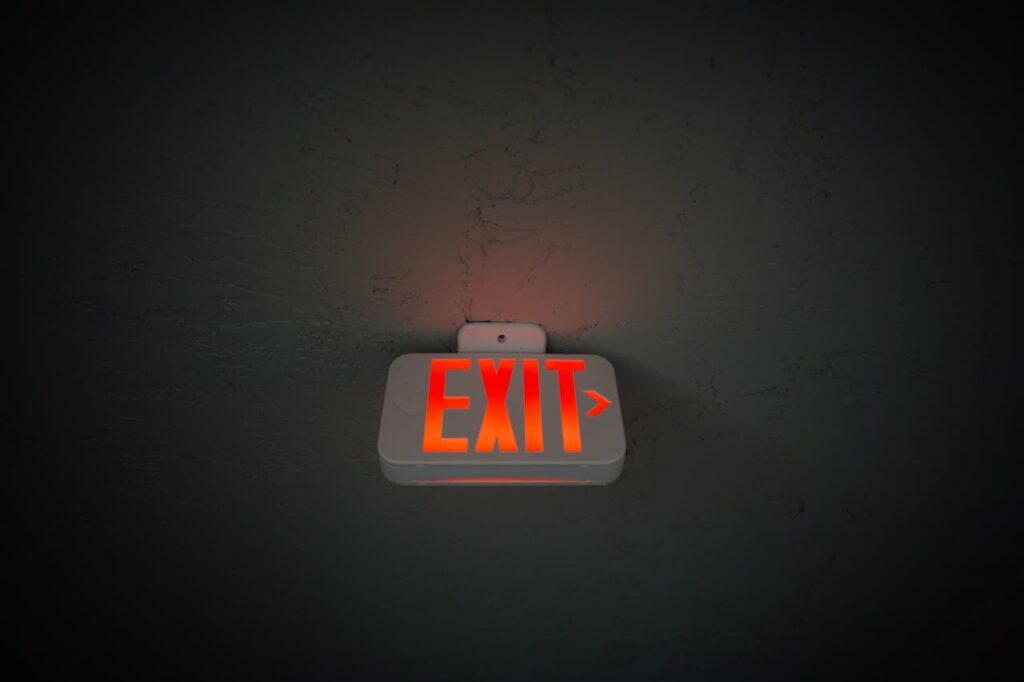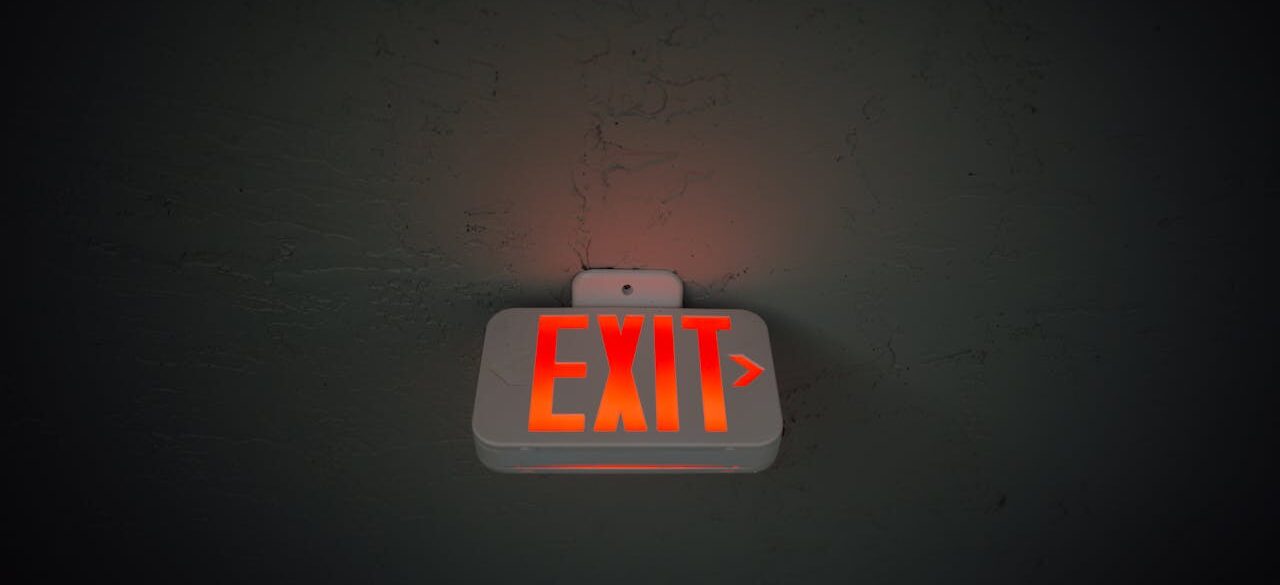Emergency lighting is a crucial safety feature in any workplace, ensuring that individuals can navigate safely in the event of a power outage or emergency situation. It refers to the lighting systems that provide illumination when the normal lighting fails, often due to a fire, power failure, or other emergencies. Emergency lighting helps guide people to safety, especially in situations where visibility may be limited, and standard lights are no longer functioning.

In a busy city like London, where many workplaces are located in large, multi-story buildings or complexes, emergency lighting becomes even more essential. Ensuring that emergency lighting systems are properly installed and maintained is the responsibility of both employers and qualified professionals, such as electricians in London. Understanding the role of emergency lighting and its importance in safeguarding lives and property is critical for businesses and organizations across various sectors.
Types of Emergency Lighting Systems
Emergency lighting systems generally come in two forms: escape route lighting and open area lighting. Both types play distinct roles in ensuring safe evacuation and minimizing risks during emergencies.
- Escape Route Lighting: This type of emergency lighting ensures that people can find their way to exits safely, even when regular lighting is not available. It includes illuminated exit signs, which help identify the direction of escape routes, and pathway lights that mark corridors and stairways.
- Open Area Lighting: This is designed to ensure general illumination in places that could become hazardous if they are left in the dark. Open area lighting helps provide adequate visibility for personnel to make decisions or take action during an emergency, such as evacuating equipment or assisting others in the workplace.
- High-Risk Task Area Lighting: In areas where critical operations take place, such as chemical plants or medical facilities, high-risk task area lighting ensures that employees can continue to operate safely even when normal lighting is disrupted. These lights are intended to keep essential operations running in critical environments.
- Standalone Emergency Lights: These are battery-powered lights that come on automatically when the primary power source is lost. They are often mounted on walls or ceilings and offer localized lighting in smaller areas or around exits.
Why Emergency Lighting Is So Important in the Workplace
1. Life Safety
The primary purpose of emergency lighting is to ensure the safety of individuals in the workplace during an emergency. In the event of power failure or when smoke or fire compromises visibility, these lights provide essential guidance to exit routes and emergency equipment, such as fire extinguishers or first-aid kits. In an evacuation scenario, emergency lighting can mean the difference between life and death, helping to prevent accidents that could occur due to inadequate visibility.
In large, crowded office buildings or factories in London, the rapid identification of exit routes becomes even more critical. When power is lost, the absence of clear guidance can create panic, resulting in confusion and even injuries. Emergency lighting helps prevent these scenarios by illuminating exit signs and corridors, ensuring employees can leave the premises quickly and safely.
2. Legal Compliance
Emergency lighting is not just a best practice—it is a legal requirement in many countries, including the UK. The Regulatory Reform (Fire Safety) Order 2005 outlines that every workplace must have emergency lighting that functions during a power failure, ensuring that employees can evacuate safely. Additionally, The Health and Safety at Work Act 1974 places responsibility on employers to ensure that the workplace is safe for employees, which includes providing emergency lighting systems.
In London, businesses are expected to comply with these regulations to avoid legal repercussions. Failure to comply with emergency lighting requirements can result in fines, legal action, and even closure of the business. This is why the expertise of electricians companies in London is crucial to ensure that the installation, maintenance, and testing of emergency lighting systems are carried out in accordance with the law.
3. Minimizing Damage and Loss
Besides protecting lives, emergency lighting can help prevent the loss of valuable equipment and property. In industries such as manufacturing, technology, or healthcare, an emergency event can disrupt operations, causing equipment to be damaged or lost. Proper emergency lighting can help employees identify and address critical issues, such as safely shutting down equipment, retrieving sensitive data, or safeguarding valuable assets.
In office environments or retail businesses, emergency lighting helps employees locate valuable documents or items, allowing for safe evacuation while minimizing potential damage. This is particularly important in high-risk industries, where operations are continuous and disruption can lead to significant financial losses.
4. Improving Emergency Response
In the event of a fire, medical emergency, or other disasters, emergency lighting allows emergency responders, such as fire brigades or paramedics, to quickly navigate the building. Clear and illuminated pathways allow these professionals to reach affected individuals faster, thus improving the overall emergency response time.
In multi-story buildings common in London, the complexity of navigating through stairwells, corridors, and hallways can make it difficult for first responders to locate the source of the emergency. Properly installed and maintained emergency lighting can help reduce confusion and ensure that the responders can act swiftly and efficiently.
5. Employee Confidence and Wellbeing
Emergency lighting also plays a role in promoting employee confidence and wellbeing. Employees are more likely to feel secure and valued when they know that their employer takes their safety seriously. A well-maintained emergency lighting system shows that the company has implemented the proper safety measures in case of an emergency. This boosts employee morale, reduces anxiety, and contributes to overall workplace satisfaction.
6. Business Continuity
In addition to protecting people and property, emergency lighting also supports business continuity. In case of emergencies like power cuts, employees will be able to continue with minimal disruption, whether that means evacuating the building, completing critical tasks, or accessing backup systems. Ensuring the smooth continuation of operations during emergencies is vital for maintaining productivity and minimizing downtime.
The Role of Electricians in London
The installation, maintenance, and testing of emergency lighting systems are specialized tasks that require expertise. London Electricians play a vital role in ensuring that emergency lighting systems are properly set up, compliant with legal standards, and regularly tested to ensure optimal performance during emergencies.
Professional electricians can conduct detailed risk assessments of your workplace to determine the appropriate type and number of emergency lights required. They ensure that lighting systems are placed at strategic locations, such as near exits, stairways, and high-risk areas, so they are accessible and effective when needed.
Regular testing and maintenance of emergency lighting systems are also essential. Electricians ensure that lights are functioning correctly, batteries are charged, and backup power sources are operational. Routine inspections and testing of the system reduce the risk of failure during an emergency and ensure the system’s compliance with safety regulations.
Conclusion
In today’s fast-paced and often unpredictable workplace environments, emergency lighting systems are essential for ensuring the safety and well-being of employees, clients, and visitors. They provide clear pathways for evacuation, minimize damage to property, and support emergency response teams in navigating complex buildings. The role of electricians in London is crucial in ensuring these systems are designed, installed, and maintained correctly, adhering to legal requirements and industry standards.
Whether you’re a small business owner or managing a large corporate office, investing in a reliable emergency lighting system is one of the most responsible actions you can take. It demonstrates a commitment to workplace safety, protects valuable assets, and, most importantly, saves lives in times of crisis.



